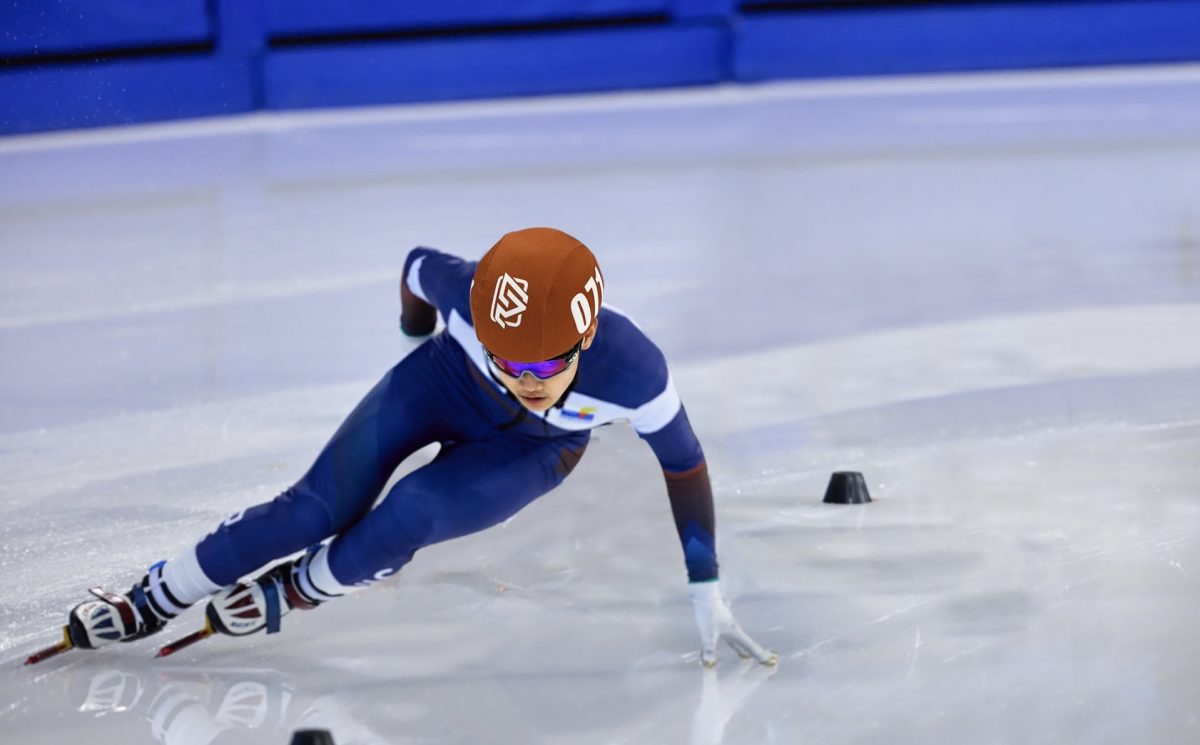5:28 A.M.
My body jolts awake, as if someone had forcefully shook me. After hundreds of days of waking up at this time, it has become instinct. I struggled to lift myself while my eyes focused on the blurry surroundings. My whole body, fatigued from the past day’s activities, protested against leaving the warm comforts of the bed and entering the cold outside. After a few minutes of fighting with discipline, I was up and changed.
On the way to the rink, I slept through all of the bumps and crevices that the car rolled over, with my tiredness overriding any discomfort that I might have felt. I usually also open the window on the way to the rink, as the cold air soothes my body and my nerves. Upon arriving at the rink, I greet my coach Hongyang Wang, a former Chinese national team skater and World Champion, and enter the rink to begin warming up.
I see many of my teammates warming up and chatting amongst each other. After briefly greeting them, I began probably the most important routine of the entire practice: warm up. For any athlete out there, the importance of warming up not only your muscles, but also your various joints and tendons cannot be understated. Improper warm-up is the leading cause of training-related injuries, which is something that I really want to avoid at this stage in my career.
I start by running two laps around the track, in order for my muscles to wake up. This also serves a secondary purpose to prepare the body for more rigorous movement. Next, I do a few dynamic warm-ups, running between stretches to maximize muscle activity. This constant muscle movement leads right into my third part of the warm-up routine, which is various imitations of speed skating movements that I do on ice, such as side push and crossovers. These imitations help my muscles to break into the feeling of staying low and doing high quality movements, so that the feeling is mirrored on ice. Lastly, I do a few sets of belt crossovers, where someone holds me using a belt and I train my crossovers. These are easily the most important aspect of the turn in short track, as the balance between leaning angle and push power can determine the difference between falling and a successful turn.
Another aspect about speed skating that is endearing to me is the feeling of the cold skinsuit connecting with my skin, as it provides a wake-up call to me. The boots that I wear have been customized to my foot, to the point where there is almost zero room for movement inside the boot. It’s time to step on the ice.
The whole team is called to the middle, where our coach explains our training plan today. And today was a great day, because we were doing a speed workout. These are easily my favorites, as they do not cause a lot of pain for the rest of the day, and they are extremely fun to do.
We start with our warm up relay, proving again how important it is to execute proper warm-up. In a relay, we have multiple groups of skaters, and they push each other through multiple rounds of exchanges. After this, we begin the workout. For a speed workout, I usually skate around four to five sets of one lap, in which I build up two laps in preparation to gain the maximum speed possible. I am skating with four of my other teammates who are around the same speed as me, so this also offers some opportunities to go even faster by chasing down the leader through leaving a gap. Make no mistake, the atmosphere inside the rink is serious. We then proceed to the last and most dreaded part of any training; the 5K relay. In this relay, there is only one person on the track, as opposed to the normal two or three people. And instead of it being slow-paced like the warm-up relay, it is an all-out sprint. The relay consists of skating one and a half laps around the track eight times, so not only is it a test of endurance, but also a test of mental will. My trick to this relay is that I always count in blocks of exchanges, so I count every two relay exchanges as one. This way, the number of times seems less daunting, and boosts my morale to where I can finish it with a little gas in the tank.
With training done, we put the pads back on the carts to carry out of the rink through the door that the zamboni (ice resurfacer vehicle) comes out of, before exiting the ice and changing back into our regular clothes. Once done, I quickly head over to the office to begin stretching; I say quickly because right after training, which ends at around 9:00 AM, I have to head to school. But although I must be hasty with my stretching, I still put a lot of effort into making sure that my muscles are properly relaxed. Stretching, just like warm-up, is another essential part of the routine. After saying goodbye to my coach and my teammates, I exit the rink and hop on the car to get to school. And with this, my training has ended. While most kids are done with their first class and still full of energy, I arrive at school with my energy levels battle tested. My day has only started. But when trained through repetition and discipline, I am ready to take on anything that school has to offer.





